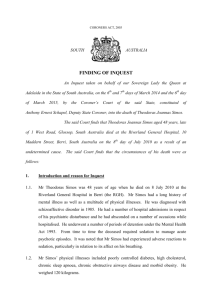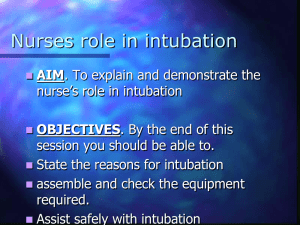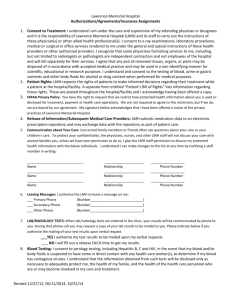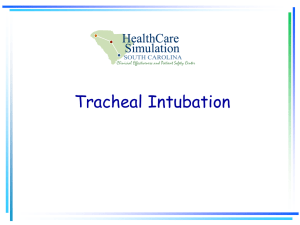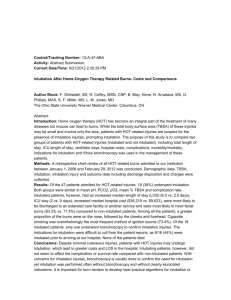SIMOS Theodoras Joannas - Courts Administration Authority
advertisement
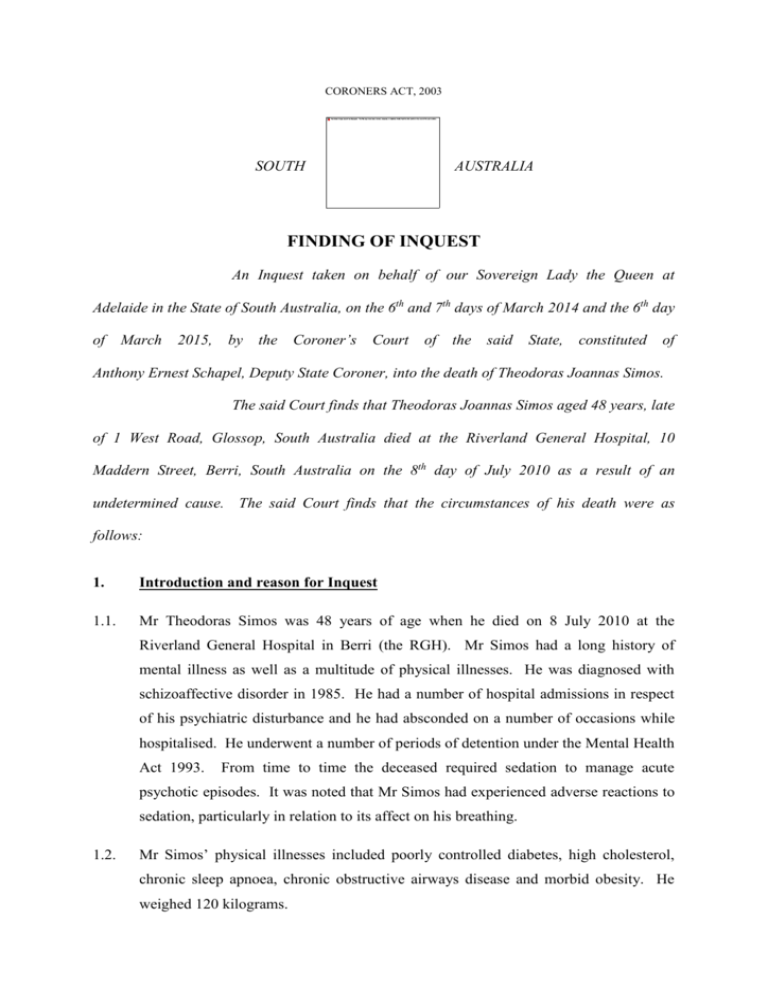
CORONERS ACT, 2003 SOUTH AUSTRALIA FINDING OF INQUEST An Inquest taken on behalf of our Sovereign Lady the Queen at Adelaide in the State of South Australia, on the 6th and 7th days of March 2014 and the 6th day of March 2015, by the Coroner’s Court of the said State, constituted of Anthony Ernest Schapel, Deputy State Coroner, into the death of Theodoras Joannas Simos. The said Court finds that Theodoras Joannas Simos aged 48 years, late of 1 West Road, Glossop, South Australia died at the Riverland General Hospital, 10 Maddern Street, Berri, South Australia on the 8th day of July 2010 as a result of an undetermined cause. The said Court finds that the circumstances of his death were as follows: 1. Introduction and reason for Inquest 1.1. Mr Theodoras Simos was 48 years of age when he died on 8 July 2010 at the Riverland General Hospital in Berri (the RGH). Mr Simos had a long history of mental illness as well as a multitude of physical illnesses. He was diagnosed with schizoaffective disorder in 1985. He had a number of hospital admissions in respect of his psychiatric disturbance and he had absconded on a number of occasions while hospitalised. He underwent a number of periods of detention under the Mental Health Act 1993. From time to time the deceased required sedation to manage acute psychotic episodes. It was noted that Mr Simos had experienced adverse reactions to sedation, particularly in relation to its affect on his breathing. 1.2. Mr Simos’ physical illnesses included poorly controlled diabetes, high cholesterol, chronic sleep apnoea, chronic obstructive airways disease and morbid obesity. He weighed 120 kilograms. 2 1.3. Mr Simos’ most recent detention order had been imposed by the Guardianship Board on 22 June 2010. This was a 6 month continuing detention order under Section 13 of the Mental Health Act 1993. This order was still extant as of the date of Mr Simos’ death. Mr Simos place of detention for these purposes was the Lyell McEwin Hospital (the LMH) in Elizabeth Vale. On 7 July 2010 Mr Simos left the open mental health ward at the LMH. He did so without leave. This was the day before his death. Mr Simos then caught a taxi to the Riverland district. The police were made aware of the fact that Mr Simos had left the confines of the LMH. At about 8:45am on 8 July 2010 police attended with a South Australian Ambulance Service (SAAS) crew at Mr Simos’ father’s property on McIntosh Avenue, Glossop in the Riverland. Mr Simos was located at that premises. Following a struggle with police he was apprehended and conveyed to the RGH. There Mr Simos would remain until he unexpectedly passed away that evening. 1.4. As indicated above, Mr Simos’ continuing detention order was imposed on 22 June 2010 by the Guardianship Board. This order was imposed pursuant to the Mental Health Act 1993. On 1 July 2010, a week before Mr Simos’ death, the revised Mental Health Act 2009 came into operation. The new Act repealed the previous Act. By virtue of clause 2(5) of the transitional provisions under Schedule 2 of the new Act, the continuing detention order that had been originally imposed by the Guardianship Board pursuant to the repealed Act continued in force as a level 3 detention and treatment order under the new Act. When Mr Simos left the LMH on 7 July 2010 without leave of absence, he became a ‘patient at large’ as defined within the new Mental Health Act 2009. Accordingly, he became liable to be taken into the care and control of police1. If necessary, restraint or force could be used by police for that purpose2. As it happens, some force was used by police in restraining Mr Simos, but I find that it was no more than was necessary and reasonable. 1.5. Once taken into the care and control of police, police were required to transport Mr Simos, or arrange for his transport, to a treatment centre3. For these purposes, the appropriate treatment centre would have been the LMH. In the event, Mr Simos was not transported to a treatment centre by police. Rather, he was transported to the RGH at Berri where he remained for the rest of that day until his death that evening. The statements of the police officers who took Mr Simos into their care and control 1 Section 57(1)(b), (4)(a) of the Mental Health Act 2009 Section 57(4)(c) of the Mental Health Act 2009 3 Section 57(5)(b) of the Mental Health Act 2009 2 3 are silent in respect of the legal authority that enabled them to convey Mr Simos to the RGH at Berri, but I infer that their purpose in doing so was to arrange for Mr Simos ultimately to be transported, by the appropriate and lawful means, to the relevant treatment centre which was the LMH. The transportation to a treatment centre could have been effected either by police or an authorised officer which, under the Mental Health Act 2009, includes an ambulance officer or a person employed as a medical officer or flight nurse by the Royal Flying Doctor Service of Australia (the RFDS). The RFDS was contacted and arrangements were sought to be made for Mr Simos’ transfer to the LMH through that entity. As things were to transpire throughout the course of that day, Mr Simos’ transfer could not be effected by way of the RFDS at a time before his death. The manner in which these circumstances unfolded will be discussed below. 1.6. I am satisfied that Mr Simos was lawfully apprehended by police. Further, I am satisfied that his custody and detention within the RGH was lawful at all material times prior to his death. 1.7. The fact that Mr Simos had been apprehended as a ‘patient at large’ and was being kept within the RGH pending his transfer to his treatment centre meant that his death occurred while he was being detained pursuant to the Mental Health Act 2009. Mr Simos’ death was therefore a death in custody as defined within the Coroners Act 2003 and an Inquest into the cause and circumstances of his death was for that reason mandatory. 2. Mr Simos’ absence without leave from the Lyell McEwin Hospital 2.1. Mr Simos as of 7 July 2010 was accommodated within an open ward at the LMH. It was from this environment that Mr Simos left the hospital without leave. Admitted into evidence in the Inquest was the statement of Dr Jeffrey Harvey4, a consultant psychiatrist, who is a senior staff specialist in adult psychiatry at the LMH. Dr Harvey’s statement describes Mr Simos’ accommodation at the LMH in the period between 2 June 2010 and 7 July 2010. Dr Harvey was Mr Simos’ treating psychiatrist for that period. As of 2 June 2010 Mr Simos was considered to require accommodation within a locked ward. Dr Harvey considered that Mr Simos was floridly psychotic with grandiose delusions, and as well, he exhibited threatening 4 Exhibit C12a 4 behaviour. Mr Simos’ multiple severe physical illnesses were also recognised at the LMH. As it happened, at a time before Mr Simos’ death, Dr Harvey would form an opinion and make a notation in Mr Simos’ casenotes at the LMH that having regard to Mr Simos’ multiple severe physical illnesses that he was at an extremely high risk of death. The risk posed in Dr Harvey’s opinion was as a result of self-neglect on the part of Mr Simos insofar as there was no evidence to support the proposition that he was managing any of his chronic health conditions and that he continued to act in a way that placed his health at risk. In fact Dr Harvey had raised a question as to whether Mr Simos, due to his severe physical problems, ought to be resuscitated in the event of terminal collapse. When Dr Harvey discussed that issue with Mr Simos, his attempts were met with delusional statements along the lines that Dr Harvey should speak to his ‘13 wives’. Therefore, Dr Harvey at no stage pursued that issue. That Mr Simos was a difficult and floridly psychotic individual comes across very strongly in Dr Harvey’s statement. 2.2. In the initial stages of Mr Simos’ time at the LMH a management plan was put into place that included stabilising medication in a closed ward environment with a view ultimately to attempting transfer to the Rural and Remote ward at Glenside Hospital. Part of the plan also was to attempt to stabilise Mr Simos so that he could ultimately function within an open ward. 2.3. Dr Harvey describes the various detention and treatment orders that were made in relation to Mr Simos, the last of which was imposed on 22 June 2010 by the Guardianship Board. This was for a period of 6 months. 2.4. Dr Harvey describes a period of gradual settling on the part of Mr Simos towards the end of June 2010 such that a trial of accommodation within an open unit was decided upon. As Dr Harvey explains, this was undertaken in order to determine Mr Simos’ suitability for ongoing care in an open unit. There were some trial periods of accommodation in an open ward with some success. Dr Harvey explains further: 'I am aware that there is always a risk of absconding in an open ward. In this case I assessed that the trial was necessary for the care of Mr Simos in view of his long term treatment plan which needed to take place in order to serve that plan.' 5 5 Exhibit C12a, page 6 5 2.5. As a result of favourable open ward trials, accommodation was sought from the Rural and Remote team. On 5 July 2010 Mr Simos was transferred from the closed ward at the LMH to the open ward at the LMH awaiting transfer to Rural and Remote. 6 July 2010 was the scheduled date for Mr Simos’ transfer. However, it could not be carried out on that day due to lack of bed availability. Mr Simos was advised. 2.6. On 7 July 2010 Mr Simos was continually asking when he would be transferred to Rural and Remote at Glenside and was continually told that there was no bed available for him at the time. At about 4pm that day it was ascertained that Mr Simos was missing from the open ward. There is no evidence as to the method of his departure. 2.7. The circumstances of Mr Simos’ detention and the appropriateness of his accommodation at LMH were examined by an independent psychiatrist, Dr Andrew Champion. Dr Champion did not have any personal involvement with Mr Simos’ care. Rather, Dr Champion was asked to provide his independent opinion about the circumstances surrounding Mr Simos and his departure from the facility without leave. I do not need to go into the detail of a comprehensive report that has been provided by Dr Champion to the Inquest6. Suffice it to say that in his view Dr Harvey’s statements indicate that there was appropriate consideration of Mr Simos’ risk of harm to self or others, as well as to his risk of absconding at the time consideration was given to Mr Simos’ transition from closed to open accommodation. Dr Champion expresses the opinion that Mr Simos’ transition from a closed to an open ward appears to have been conducted in a thoughtful and appropriately conservative way, informed by consultation with Mr Simos’ long term community psychiatrist and as part of a plan to manage Mr Simos’ chronic and apparently treatment resistant psychiatric condition. The Court has no reason to depart from that assessment of the situation and has nothing further to add. 3. Mr Simos’ post-mortem examination 3.1. Mr Simos’ death at the RGH was quite unexpected. Mr Simos’ body was subjected to a post-mortem examination including a full autopsy. This was conducted by Dr Neil Langlois who is a forensic pathologist at Forensic Science South Australia. Dr 6 Exhibit C23a 6 Langlois’ post-mortem report7 was tendered to the Inquest. Despite his full autopsy, Dr Langlois was unable to identify a specific cause of death. He expresses Mr Simos’ cause of death as ‘undetermined’. That much is expressed in his original post-mortem report. In a subsequent report that was more recently sought by the State Coroner, Dr Langlois gave consideration to a number of possible mechanisms of death that had not specifically been referred to in his original report. In that report 8 Dr Langlois stated that the cause of death remained not apparent to him. Dr Langlois gave oral evidence in the Inquest. Dr Langlois there maintained that the cause of Mr Simos’ death is undetermined. I will return to the question of Mr Simos’ cause of death in a later section of these findings. However, I should state here that I have accepted Dr Langlois’ evidence that the cause of Mr Simos’ death is undetermined. 3.2. It was noted during the post-mortem examination conducted by Dr Langlois that Mr Simos had been 120 kilograms and was 172cm in height. He therefore had a BMI of 41. At post-mortem it was also noted that Mr Simos had cardiomegaly, which is enlargement of the heart, with right ventriculary hypertrophy. 3.3. Detected within Mr Simos’ post-mortem blood were therapeutic concentrations of the antipsychotic drugs haloperidol, risperidone and olanzapine. Alcohol, amphetamines, cocaine, cannabinoids, morphine, benzodiazepines and other common drugs were not detected in Mr Simos’ blood. During the course of the day in question, Mr Simos had been given haloperidol and olanzapine at the RGH. The risperidone found in his bloodstream would be consistent with his usual depot antipsychotic medication. Although during the course of that day Mr Simos was given benzodiazepines in order to sedate him, no trace of the same was found in his post-mortem blood. As will be seen below, when Mr Simos’ began to experience an adverse respiratory reaction to sedation, attempts had been made to reverse the effects of benzodiazepine administration. 4. Mr Simos’ medical conditions 4.1. Mr Simos was a large man who suffered from non-insulin dependent diabetes, hypertension, obstructive sleep apnoea, obesity and substance abuse. chronic heavy smoker. He was a In addition, from time to time Mr Simos had exhibited adverse reactions to benzodiazepines causing respiratory distress. This is a fact that 7 8 Exhibit C32 Exhibit C32a 7 was recorded in the LMH notes and was also known to medical practitioners in the Riverland area, a number of whom were familiar with Mr Simos’ and his chronic conditions. 4.2. There was also the existence of the major psychiatric disorder from which Mr Simos suffered, namely schizophrenia. 4.3. As explained by Dr Langlois in his evidence, Mr Simos’ enlarged heart may have predisposed him to cardiac arrhythmia. The enlargement of a person’s heart can precipitate death. The disturbance of the electrical activity within the heart is liable to cause cardiac arrhythmia which can lead to the person’s sudden death9. An arrhythmia in these circumstances is more likely to occur when a person is hypoxic, that is to say when their body is oxygen depleted. A history of sleep apnoea can also involve the compromising of the airway as a possible result of which sufferers may experience periods where they stop breathing. The enlargement at the right side of Mr Simos’ heart might also involve raised blood pressure on the right side of that organ. This condition is consistent with a history of sleep apnoea with intermittent airway obstruction. People with a history of pulmonary hypertension, which is raised blood pressure of the right side of the heart, and enlargement of the right side of the heart also have an increased risk of sudden death10. 4.4. It is against that medical background that the circumstances of Mr Simos’ death come to be evaluated. 5. The events of 8 July 2010 at the Riverland General Hospital 5.1. Mr Simos was seen at 9:10am by Dr Ghulam Jilani. Dr Jilani provided a number of statements to the Inquest. Dr Jilani was represented at the Inquest by Ms Jayne Basheer of counsel. Dr Jilani is a general practitioner who has been working in South Australia since late 2007. In December 2008 Dr Jilani commenced working as a fulltime general practitioner at the Berri Medical Clinic. He participated in daytime as well as after hours accident and emergency duties at the RGH in Berri. Dr Jilani graduated in medicine in Pakistan in 1989. He has undergone training and has experience in emergency medicine including advanced life support and management of emergencies including acute mental health presentations. 9 Transcript, page 35 Transcript, page 36 10 8 5.2. When Dr Jilani saw Mr Simos at the RGH on the morning in question, Mr Simos was talkative, agitated and made statements to the effect that he was not going to remain in the hospital and that he did not want to go back to Adelaide. To Dr Jilani, Mr Simos appeared to be clearly deluded. 5.3. Being aware of something of Mr Simos’ history, Dr Jilani formed the view that Mr Simos’ behaviour might soon become uncontrollable. Dr Jilani states that he was not aware of Mr Simos’ sensitivities to benzodiazepines. He wrote out an order for olanzapine and lorazepam. Mr Simos had to be talked into taking these sedating medications. He was helped onto the barouche and he calmed after about ten minutes. He went to sleep. His vital signs were monitored. He would occasionally wake up and try to leave but in due course went into a deep sleep. Mr Simos was able to eat some sandwiches during periods of being awake. 5.4. Dr Jilani completed an RFDS involuntary patient transfer form in order to effect an RFDS transfer. This took place at about 9:20am that morning. I infer that the original intention was for clinical staff at the hospital to facilitate Mr Simos’ transfer by way of RFDS to the LMH as soon as possible. In the event, difficulties in effecting an expedited transfer by this means were encountered and Mr Simos’ transfer was not able to occur. I am satisfied that transfer by way of road using the SAAS would not have been a feasible proposition at any stage that day having regard to Mr Simos’ psychosis and co-morbidities. 5.5. At approximately midday Mr Simos became difficult to handle. He wanted to leave the hospital and was combative. He was given another dose of lorazepam and he again went to sleep. At that stage the information from the RFDS was that they would be picking him up in the next few hours to transport him back to Adelaide. This did not eventuate. 5.6. At approximately 4pm Mr Simos again became active and was punching out. He had to be held down by a security officer and a nurse. He was given 2.5mg of midazolam intravenously. This sedated him. However, his oxygen saturations dropped and as a result a nasopharyngeal airway was inserted. This had the effect of increasing Mr Simos’ oxygen saturations to 99% on 8 litres of oxygen with a Hudson mask. It was noted that he was at that point tachycardic with a pulse rate of between 125 and 139. 9 5.7. At 6:15pm nursing staff noticed that Mr Simos’ oxygen saturations had reduced to the low 80s which was a matter of concern. At that stage a nurse intervened by administering a jaw lift. She called for the attendance of an on-duty intern, Dr Dalamagas. Mr Simos was ventilated by bag and mask. 5.8. Mr Simos appeared to be deeply sedated. It was decided that the effects of the midazolam should be reversed and to this end he was given flumazenil intravenously. Mr Simos slowly recovered and awoke in confusion. 5.9. At the time that Mr Simos’ sedation was reversed, the position regarding his transport by way of the RFDS was uncertain. Dr Jilani’s statement 11 asserts that he was told at about that time that Mr Simos would be going to the Royal Adelaide Hospital instead of the LMH and that before a communication could be made with either RFDS or the Riverland Regional Mental Health Service, the development regarding Mr Simos’ reduction in oxygen saturations had taken place. 5.10. When Mr Simos awoke from the reversal of midazolam sedation, he pulled out his airway and monitor leads. Dr Jilani contacted Dr Robertson who was the on-call anaesthetist from Loxton who was unable to attend immediately. As it happened, another anaesthetist, Dr Barry Egan, was at that time in the hospital operating theatre. Dr Jilani asked Dr Egan to assess Mr Simos. Dr Jilani’s statement asserts that at that point he asked Dr Egan about the possibility of intubation for transfer, meaning intubation with transfer ultimately in mind. In Dr Jilani’s witness statement taken on 6 March 201412 he states that he himself had never performed an endotracheal intubation. He did not consider intubating the patient himself for two reasons. Firstly, he did not feel confident to undertake the procedure. Secondly, Drs Robertson and Egan were the most qualified persons on duty to perform it. The only time Dr Jilani would consider intubating a patient himself would be in an acute emergency situation where no other medical professional with superior qualifications to his was available to undertake the procedure. 5.11. In his statement13 Dr Jilani acknowledges that at the time he was considering the question of intubation and had requested assistance from Dr Egan, the patient was conscious and stable and that there was no immediate emergency that would have 11 Exhibit C33 Exhibit C33a 13 Exhibit C33a 12 10 required instant intubation. Rather, the whole purpose of an intubation assessment was for management of transfer of the patient to Adelaide in due course. Dr Jilani himself believed that Mr Simos should have been intubated for transfer and that if he had been so intubated he would have been given priority for transfer by way of MedSTAR within 60 minutes. In his statement he expresses disappointment that Dr Egan did not share his view about intubation. 5.12. A statement was taken from Dr Barry Egan on 3 March 201414. Dr Egan practises as a specialist anaesthetist at Adelaide Anaesthetic Services. On 8 July 2010 he was providing anaesthesia services for a surgical list being performed at the RGH by an oral surgeon. The list commenced at 8am and continued to approximately 8pm involving 16 separate patients. Dr Egan was in the middle of a procedure when he was requested to see Mr Simos. Dr Egan asserts that he was asked by a nurse to see Mr Simos ‘on an emergency basis’. He was asked whether Mr Simos required intubation. Dr Egan’s statement asserts ‘my recollection is that I was told Mr Simos might need immediate intubation’. Dr Egan states that from this piece of information he assumed that the patient would be asleep and stable, otherwise he would not have left the operating theatre even momentarily. In any event he attended Mr Simos in a room which was next to the operating theatre. Dr Egan in fact found that the patient was conscious and that he responded to his name, Theo. Mr Simos was asked to take a deep breath and he did so. Mr Simos was breathing independently. Dr Egan’s recollection is that Mr Simos was not lying down. Dr Egan asserts that in the circumstances, and given that the patient was conscious, able to breathe independently and could follow instructions, it was his assessment that he did not require intubation. In the five minutes or so that he had Mr Simos under observation, Mr Simos continued to breathe independently and his condition did not change. Dr Egan told the clinicians who were present that given that Mr Simos was independently maintaining his airway he did not require intubation at that time. He said that he would be available for further assistance if required. Dr Egan had no further involvement with Mr Simos. 5.13. Dr Egan had no recollection of having been asked about intubation in the context of transfer. He points out that a decision to intubate a patient prior to transfer involves many factors which must be assessed and that this assessment takes some time. I 14 Exhibit C30 11 infer from this that the intubation of a conscious patient breathing independently is no simple matter and that many things would have needed to be taken into account before any such measure was undertaken. I do not understand from the evidence that at that point in time there was any real prospect of immediate transfer, and so it is not known for how long Mr Simos would have needed to be intubated and sedated prior to transfer. 5.14. The question as to whether or not Mr Simos ought to have been intubated was an issue that was examined by an independent expert, Dr Peter Joyner, who is a general practitioner. Dr Joyner provided two reports to the Inquest 15. Dr Joyner expresses the opinion that the decision by Dr Jilani not to attempt to intubate the patient himself but to call for experienced assistance was correct. For an untrained doctor to attempt the procedure of intubation by himself could only be justified where the patient is dying in front of him and where without very urgent intubation the patient would die. In fact Dr Joyner states that he would be critical of an attempt by an inexperienced doctor to intubate a patient in circumstances where there was time to call a more experienced doctor to attend. I accept that evidence. As to Dr Egan’s involvement, Dr Joyner reports that the issue of when to intervene in patient management by intubation, paralysis, artificial ventilation with associated requirements to manage all physiological aspects of that patient including fluid intake and fluid loss, hydration, nutrition, renal function, skin care, eye care, optimisation of patient’s co-morbidities are all factors that need to be carefully considered before undertaking intubation as a chosen method of patient control. This in my view supports Dr Egan’s assertion that even if he had understood that a conscious and independently breathing patient was to be intubated to facilitate general patient management for the purposes of transport, this would have been no simple matter and that all of the other bodily functions that would need to be maintained in an unconscious, paralysed and intubated patient would have needed to be carefully managed. In other words, it was not a mere case of simply intubating the patient and that this would be the end of the matter. I cannot imagine Dr Egan agreeing to intubate a conscious and at that time clinically stable patient for the purposes of transfer especially when the time for that transfer was not known and particularly where Dr Egan was in the middle of a busy operation list and might have limited ability to manage the intubated patient. To my mind, such a scenario would have been unrealistic. Insofar as there is any suggestion that Dr Egan 15 Exhibits C24a and C24b 12 should have given more careful consideration to the question of intubating Mr Simos I would reject that suggestion. 5.15. Having carefully considered the intubation issue, in my view there is no criticism to be made of either Dr Jilani or Dr Egan in relation to the question of whether Mr Simos should have been intubated or not. It seems to me that if there was any misunderstanding as to the purpose of intubation it was in no sense material to the outcome. 5.16. At the time Dr Jilani made the request of Dr Egan for intubation, Mr Simos’ vital signs were stable. Following this Mr Simos’ care was handed over to Dr John Dunn. Dr Dunn was also a rural general practitioner who had practised in Berri for several years. He attended the RGH Emergency Department at about 6:30pm. Dr Dunn new Mr Simos from several previous presentations. Dr Dunn provided a statement to the Inquest16. He points out in that statement that it had been noted on several previous occasions that Mr Simos had been troubled by sedation, resulting in difficulty in maintaining his airway at times. As a result of this, Dr Dunn noted that the amount of sedation that had been given to Mr Simos that day had been minimal, and that care had been taken to observe his vital signs and to detect a respiratory compromise during periods in which Mr Simos was asleep. Dr Dunn became involved in Mr Simos’ care at the stage where Mr Simos, having been administered midazolam, was being administered flumazenil which is the benzodiazepine reversal agent. Dr Dunn observes in his statement that Dr Egan, the anaesthetist, had assessed Mr Simos’ airway to be safe and that intubation was not necessary at that time. Dr Dunn does not offer any contrary view. 5.17. At the time that Mr Simos stabilised Dr Dunn telephoned the Rural and Remote Triage Service to discuss his case. He wished to seek advice regarding the possibility of retrieval as distinct from RFDS transfer. He discussed the situation with Dr Alexander. According to Dr Dunn, Dr Alexander suggested that as Mr Simos was now stable they should continue with local management for the time being. Dr Dunn also states that Dr Alexander suggested that if more sedation was needed, olanzapine should not be used as that may have contributed to Mr Simos’ respiratory depression, but he suggested a change of treatment to administration of haloperidol and promethazine as the combination was less likely to cause respiratory depression. 16 Exhibit C3a 13 5.18. Dr Jacob Alexander is a consultant psychiatrist. His statement was tendered to the Inquest17. Dr Alexander is employed by Country Health South Australia. He was the consultant psychiatrist for the Rural and Remote Mental Health Team. His duties included clinical care on an acute ward as well as the provision of video and teleconferencing consultations for country hospitals. He provided outpatient clinic services to rural areas and also provided after hours support for medical practitioners in country areas. Dr Alexander occasionally performed rostered on-call duties that included participation in the Emergency Triage and Liaison Service (ETLS) which is a 24 hour emergency telephone service for rural and remote patients with mental health issues. The service is available to anyone who requires mental health assistance, whether it is a patient, a patient’s relative or a treating medical practitioner. One of the purposes of the ETLS is to work in collaboration with a general practitioner who is managing the care of a patient by providing advice, support and liaison, although the general practitioner provides the primary care to the patient and retains management of that care. 5.19. Dr Alexander was rostered on call during the evening of 8 July 2010. He had not been involved in the treatment of Mr Simos in the past. Dr Alexander and Dr Dunn spoke on the telephone in the early evening of 8 July 2010. Dr Alexander confirms that Dr Dunn was concerned about medication options for agitation and that Dr Dunn was keen to reduce the risk of suppressing respiration. He confirms that Dr Dunn also enquired about medical retrieval. Dr Alexander states that Dr Dunn enquired of Dr Alexander regarding alternative medication options given that there would be a delay in the RFDS transferring Mr Simos. Dr Alexander was fully aware that Mr Simos had been assessed by the anaesthetist, Dr Egan, and that a decision had been made not to intubate Mr Simos or to provide further intensive care support. Dr Alexander did not consider that he had expertise in intubation and in any event expected that Dr Dunn and Dr Egan had the advantage of actually being present with the patient. Dr Alexander confirms that he advised Dr Dunn to try haloperidol and promethazine which does not present the same degree of risk of respiratory compromise as benzodiazepines. Dr Alexander states that his advice was to try those medications and that if they were successful in sedating Mr Simos he could be transferred by the RFDS. Alternatively, if the combination did not have that effect he would recommend retrieval by MedSTAR as opposed to the RFDS or ambulance, the latter of which would not be a suitable means of transfer in any event. 17 Exhibit C29 14 5.20. As it happened, Dr Alexander was aware from unrelated enquiries made earlier by his staff that MedSTAR retrieval would not be immediately available due to more urgent medical cases that night. Dr Alexander states: 'Given my understanding of the demand being placed on MedSTAR, the fact that Mr Simos was currently maintaining his own airway and we were awaiting the effect of the haloperidol and promethazine to ascertain whether or not this would adequately calm Mr Simos, MedSTAR retrieval was not warranted at this point.' 18 5.21. In his statement Dr Dunn explains that Mr Simos was moderately settled but that at about 9pm he again became agitated. Dr Dunn requested that he be given 5mg of haloperidol and 25mg of promethazine, which he describes as low dosages for most people. At 9:30pm Dr Dunn reviewed Mr Simos and he was still agitated and combative. Another 5mg of haloperidol was then given. Mr Simos’ reaction to this was described by Dr Dunn as ‘responding to this moderately at best’. Dr Dunn again rang the Rural and Remote Triage Service and while awaiting a return call from that organisation he examined Mr Simos who at that stage appeared to be going into cardio respiratory arrest. Dr Dunn describes his presentation as follows: 'He became pale, muscles particularly around the face and neck were in spasm, and he was not breathing. We commenced cardiopulmonary resuscitation. An oropharyngeal airway was inserted with difficulty due to muscle tightness, along with jaw thrust, and high flow oxygen was again given.' 19 Despite intensive resuscitative measures that included the insertion of an endotracheal tube by Dr Robertson, an anaesthetist, Mr Simos unfortunately passed away, the time of death being 10:20pm. 6. Mr Simos’ cause of death 6.1. It was against the above clinical background that Mr Simos’ cause of death came to be assessed in conjunction with the post-mortem examination. 6.2. I have referred to Dr Langlois’ post-mortem examination and his report20. Dr Langlois provided a supplementary report21 in which he outlined possible mechanisms that may have been implicated in Mr Simos’ death. I do not need to recite the details of all of those matters. Suffice it to say that in his supplementary report Dr Langlois 18 Exhibit C29, page 5, paragraph 23 Exhibit C3a, page 4 20 Exhibit C32 21 Exhibit C32a 19 15 states that the cause of death was not apparent to him. In his oral evidence Dr Langlois expanded upon his opinions. Dr Langlois was of the view that cardiac arrhythmias such as Long QT syndrome could be excluded. Similarly, excited delirium, which is a term applied to a condition in which in an individual is aggressive and agitated and exhibiting features that may include great strength, ignorance of pain, sweating and raised body temperature, could also be excluded. Dr Langlois told the Court that he could also exclude serotonin syndrome and neuroleptic malignant syndrome which are conditions that can result from exposure to certain types of medications. Dr Langlois also noted that Mr Simos’ episode of respiratory depression due to the benzodiazepine medication that he had been given appeared to have resolved and that he had recovered between the administration of those drugs and his death. Dr Langlois told the Court that he did not believe that respiratory depression due to the benzodiazepine administration was the deceased’s cause of death. 6.3. Dr Langlois’ attention was drawn to the observations made by Dr Dunn to which I have referred, including the apparent muscle spasm in the region of the face and neck and the fact that Mr Simos was not breathing, and was asked to comment as to whether this in any way elucidated cause of death. Dr Langlois referred to a condition known as laryngeal spasm which is a condition that can be associated with the administration of major tranquilising drugs including haloperidol, risperidone and olanzapine. Dr Langlois stated that although Dr Robertson, the anaesthetist, does not appear to have reported this condition when he inserted the airway, the observation of Dr Dunn would fit the possibility that there had been a dystonic reaction to haloperidol causing an obstruction of the airway. However, Dr Langlois opined that laryngeal spasm did not have to be invoked as a possible cause of death in this case, although a degree of it may have been involved. Dr Langlois referred to Mr Simos’ extreme agitation with probable exhaustion and to his heart disease which in combination would have been sufficient to cause his death 22. Dr Langlois’ opinion can be summarised in the following passage: 'The actual final or ultimate event that has caused death I think is unascertained. As I said laryngeal spasm due to haloperidol could be possible, but we don't have to evoke it. We certainly cannot from the pathology exclude or include it. Of significance I would like to note that the levels of haloperidol, risperidone and olanzapine are very low in this case and in the literature the reports are with higher drug levels, but that doesn't exclude the possibility. So although the final precipitating cause for why this has happened I think is unclear nonetheless the underlying cause is his schizophrenic or psychiatric 22 Transcript, page 39 16 illness in combination with the facts that he's got sleep apnoea and I think we can probably call it cardiomegaly because it is enlarged to his body size. So there is an underlying cause of death that could be used, and I have alluded to those in my supplementary report, that maybe is an underlying cause. But yes, I maintain that for reasons we've discussed the actual cause of death at that time I cannot ascertain.' 23 6.4. As to whether earlier intubation may have prevented Mr Simos’ death, Dr Langlois pointed out that it is difficult to address that issue because of the uncertainty as to Mr Simos’ cause of death. He added that if exhaustion and his pre-existing cardiac disease had caused his death, intubation would not have made any difference to the outcome. 6.5. Having carefully considered all of the evidence, in my view Mr Simos’ cause of death remains undetermined. 7. The attempted transfer of Mr Simos’ from the Riverland General Hospital 7.1. I have already described some of the circumstances surrounding the attempts to transfer Mr Simos. The delay in securing Mr Simos’ transfer was substantial and undesirable having regard to his condition and the fact that he was a detained individual under the Mental Health Act 2009. To be fair, it has to be acknowledged that Mr Simos’ failure to be transferred prior to his death was not through any lack of effort. The difficulty seems to have been occasioned by the fact that, in terms of acuity of his medical presentation as distinct from his psychiatric presentation, Mr Simos was not accorded a high priority in terms of the exigencies of the workload of both the RFDS and MedSTAR. Ambulance transfer would not have been indicated in all the circumstances. One important consideration is that Mr Simos’ eventual collapse and death was quite unexpected, and while it was naturally a matter of importance to have him transferred, and was also of course an essential requirement under the Mental Health Act, there was no medical emergency involved in an assessment of whether or not Mr Simos required immediate transfer or transfer as a matter of priority over other cases. I have accepted Dr Alexander’s evidence that MedSTAR retrieval was not warranted until the effects of the sedating drugs haloperidol and promethazine was known. Unfortunately events were overtaken by Mr Simos’ collapse. As indicated in the statement of Dr Alexander, arrangements for transfer by way of MedSTAR were seriously being considered at the time that Mr Simos died. 23 Transcript, page 40 17 7.2. In his second report24 Dr Joyner has stated that he considers that this case is typical of the challenges presented to many small rural hospitals struggling to manage an acutely psychotic patient. He feels that this case illustrates the typical complexities associated with the management of those patients. In his opinion the answer to improving outcomes in these cases rests with coordinating a state-wide integrated management service to provide a structured team involving the local hospital staff, doctors and nurses, Rural and Remote Mental Health, MedSTAR and rural doctor groups. There needs to be a defined ‘team leader’ who accepts the responsibility for final management decisions and leads the team through the process. He opines that there should be a reasonably defined ‘flow chart’ that all teams follow, linked with areas of critical assessment and management steps outlined, including drug use, restraint use, transport type and destination. In his first report25 Dr Joyner also referred to the need for transfer and retrieval services to carefully risk manage and risk assess acutely psychotic patients in rural hospitals with a view to early transport where possible. I take it from this that Dr Joyner would be of the view that priority ought to be accorded to the transfer of acutely psychotic patients in certain circumstances. One would add to this that where a patient is the subject of an order under the Mental Health Act, the need for transfer of the acutely psychotic detained patient would be all the more acute. 7.3. Received into evidence is the statement of Dr Brian McKenny, a consultant psychiatrist who was the Acting Clinical Director of Rural and Remote Mental Health, Country Health SA. Dr McKenny’s statement26 informs that he has been a member of the Transport Working Group for the past 10 years and is currently the Chair of that Group. The Transport Working Group is established within the auspices of Country Health SA. Its membership includes MedSTAR, RFDS, SAAS and the Rural and Remote Mental Health Service. He points out that the RFDS is an independent body contracted to the Department. Dr McKenny states that the process regarding transfers of mentally ill patients is different from what it was at the time of the events with which this Inquest is concerned. Now, the SAAS assumes triaging responsibility for each of the services including SAAS, RFDS and MedSTAR for all transfers by road or air. Essentially, a fragmented triaging system has been replaced by a central triaging service for transfers. SAAS allocates the transfer in a particular 24 Exhibit C24b Exhibit C24a 26 Exhibit C31 25 18 case according to its triage process. This means that the RFDS will be allocated work by SAAS. 7.4. Dr McKenny produced to the Court a copy of the Transportation of Mental Health Patients Guidelines and Protocols – 2nd Edition, November 2009 – June 201027. This document appears to predate the change in process regarding triaging that I have already mentioned. Dr McKenny advises in his statement that this change took place in early 2013. Dr McKenny also advises that as of the time of the Inquest the guidelines were being reviewed to reflect the changes in triaging processes. Having examined the earlier edition of the guidelines and protocols annexed to Dr McKenny’s statement I see nothing in there that would dictate that priority should be accorded to the transfer by any entity, be it SAAS, the RFDS or MedSTAR, to mental health patients who, for whatever reason, including the fact that they have been apprehended after being at large, need to be transported to a treatment centre by virtue of a relevant provision of the Mental Health Act 2009. Naturally there may be other more urgent cases involving the need to transport a mentally ill patient from one place to another, but the fact remains that the Mental Health Act 2009 imposes legal obligations in respect of transport of patients to whom the Act applies. 8. The independent expert evidence 8.1. I have already referred to the reports of Dr Peter Joyner. In his second report Dr Joyner states as follows: 'I cannot identify any significant failure of professional care provided by any person involved in this episode. At all times decisions made, and actions undertaken, were either in response to considered expert advice, or in response to a rapidly changing clinical situation. It is easy in retrospect (as is often the case) to point to a decision made at the time that may not have been ideal but at the time seemed reasonable.' 28 Included in Dr Joyner’s array of issues that he does not believe involved any clinical shortcomings was the question of timing of intubation, whether the doses of haloperidol were excessive, which Dr Joyner believes not to have been excessive, and the preference for transport by air as opposed to by road using the SAAS which he considers would not have been an appropriate choice. 27 28 Exhibit C31 Exhibit C24b 19 8.2. Dr Joyner states in his second report that he does not believe that in this high risk clinical environment that Mr Simos’ death could have been prevented by the identification of one single change in the treatment that he received. Dr Joyner points out that Mr Simos had presented several times with the same complex management issues in the past and that even if this episode had a better outcome it is likely that in some future episode the same poor outcome would have occurred. 8.3. Dr Champion in his report dealt with the issue of Mr Simos’ medication. Dr Champion reports that in his opinion the measures to sedate Mr Simos at Berri while waiting for RFDS transport were appropriately cautious and informed both by a thorough knowledge of his previous treatment and past adverse reactions to benzodiazepines, and in consultation with the psychiatrist from the Rural and Remote Mental Health Service. Dr Champion therefore reports that he has identified no systemic issues that might have contributed to this man’s death. I have no reason to find otherwise. 9. Conclusions 9.1. The Court reached the following conclusions. 1) Mr Simos left the confines of the Lyell McEwin Hospital while he was subject to a level 3 treatment order that had been lawfully imposed. In doing so he left without leave and became a patient at large as defined within the Mental Health Act 2009. He was therefore liable to be taken into the care and control of the police; 2) SAPOL lawfully took Mr Simos into their care and control and lawfully delivered him to the hospital; 3) Mr Simos was lawfully kept at the hospital. Similarly, the treatment that he received, which some might characterise as involuntary treatment, was authorised by the Mental Health Act 2009. It was lawful treatment; 4) Appropriate efforts were made to arrange transport of Mr Simos back to his treatment centre, namely the Lyell McEwin Hospital. The efforts to have him transported were unsuccessful insofar as they were delayed because of the exigencies of workloads of the RFDS and MedSTAR. It would have been inappropriate for Mr Simos to have been transported by road in an ambulance; 20 5) Mr Simos’ treatment at the hospital was appropriate; 6) The precise cause of Mr Simos’ death cannot be ascertained. 10. Recommendations 10.1. Pursuant to Section 25(2) of the Coroners Act 2003 I am empowered to make recommendations that in the opinion of the Court might prevent, or reduce the likelihood of, a recurrence of an event similar to the event that was the subject of the Inquest. 10.2. The Court makes the following recommendations directed to the Minister for Mental Health and Substance Abuse: 1) The Court echoes the recommendation made by Dr Joyner as follows: 'There should be ongoing awareness by Rural and Remote Consultants of the need to assess carefully risk/safety factors and the limitations of rural hospitals in managing acutely psychotic and violent patients in rural SA; Reinforcement to transport and retrieval services to carefully risk manage/assess acutely psychotic patients in rural hospitals with a view to early transport where possible (I should also say that I am well aware that these recommendations form part of current policies of these organisations but that does not prevent me from stating them here).' The Court also endorses Dr Joyner’s opinions as summarised in paragraph 7.2. herein. 2) That in according priority to the transportation of mentally ill patients, that priority be given, wherever possible, to the transport of patients who are the subject of inpatient treatment orders under the Mental Health Act 2009 or who are the subject of other measures that have been invoked under that Act. Key Words: Death in Custody; Psychiatric/Mental Illness In witness whereof the said Coroner has hereunto set and subscribed his hand and Seal the 6th day of March, 2015. Deputy State Coroner Inquest Number 2/2014 (0999/2010)
